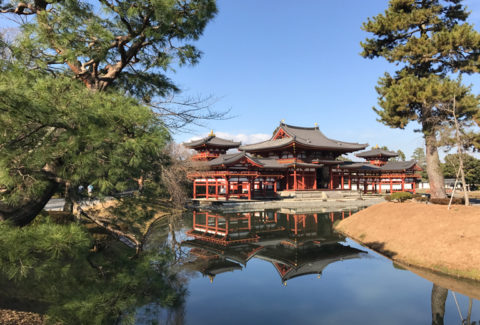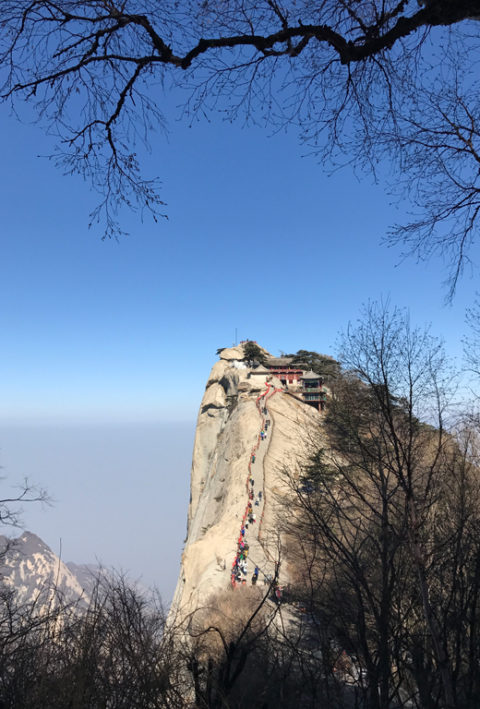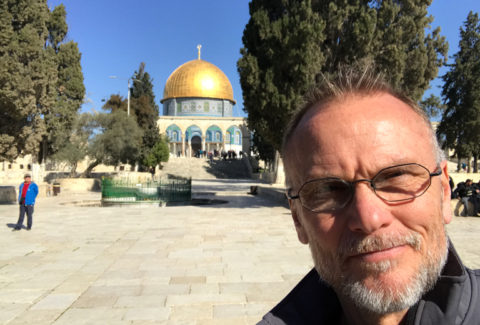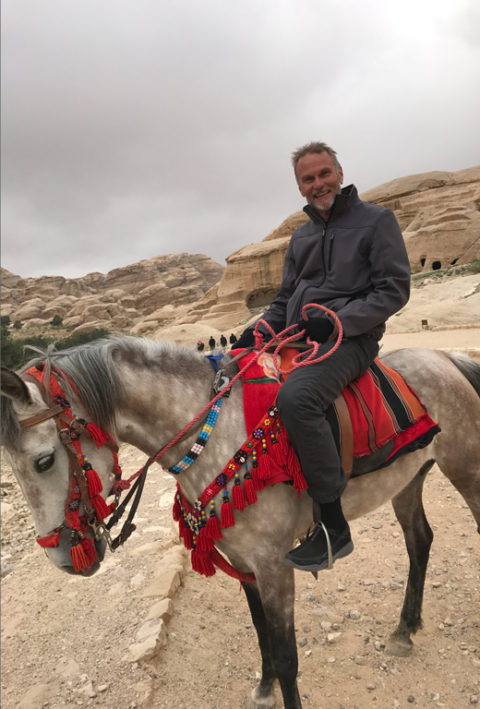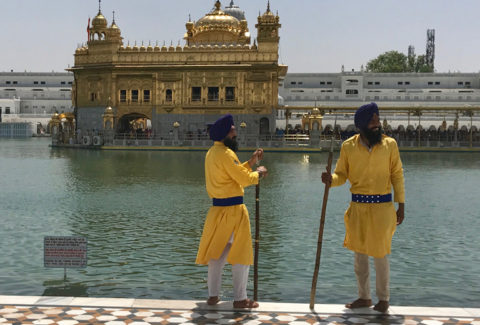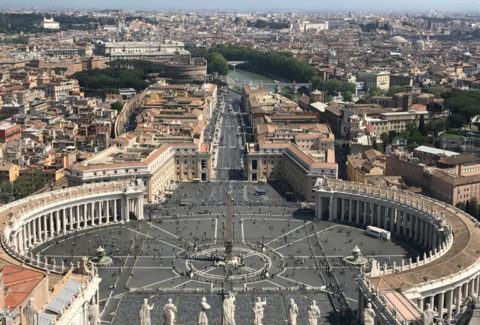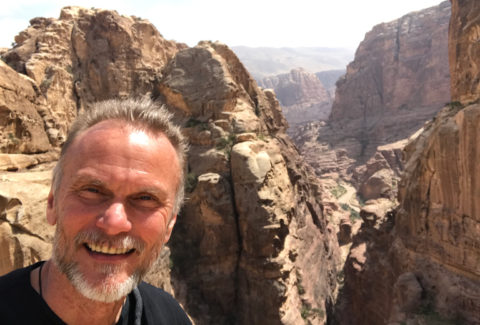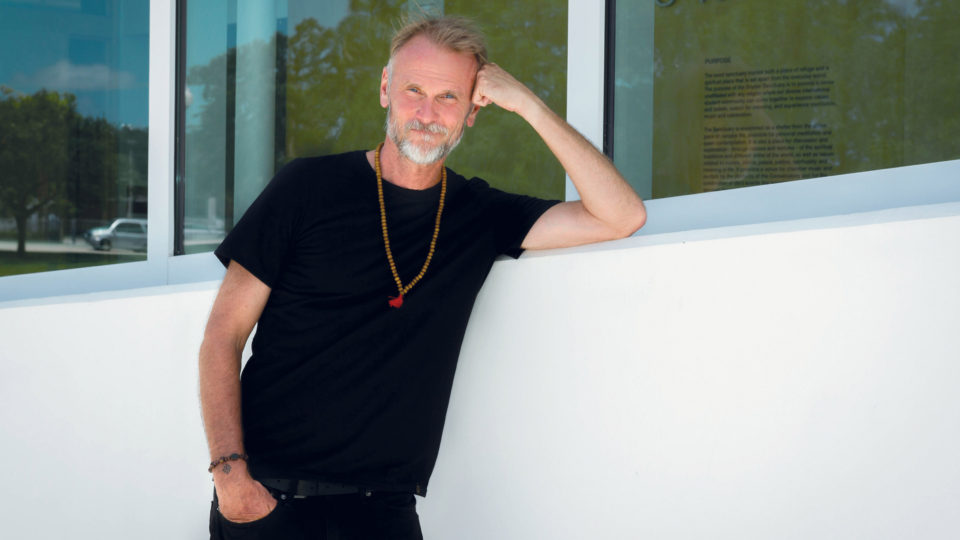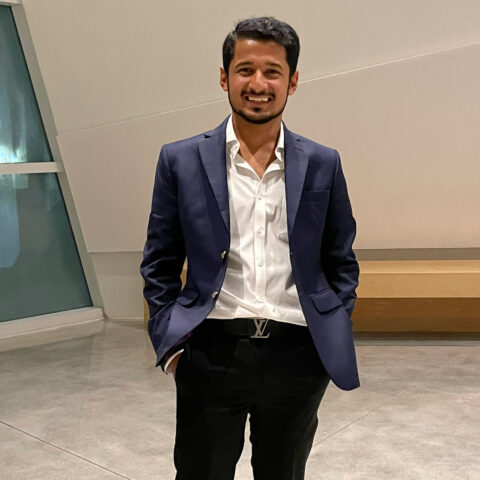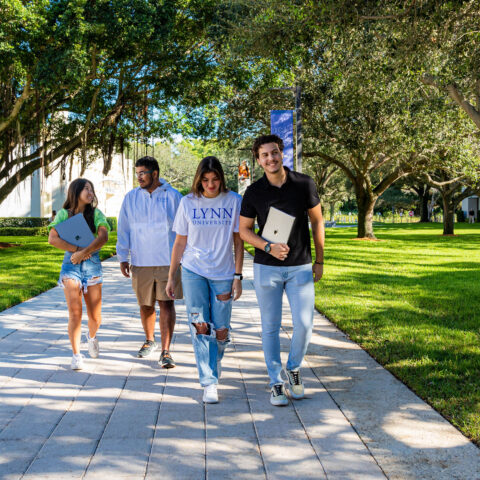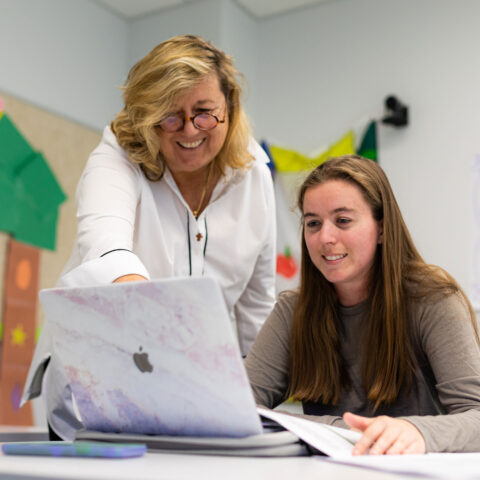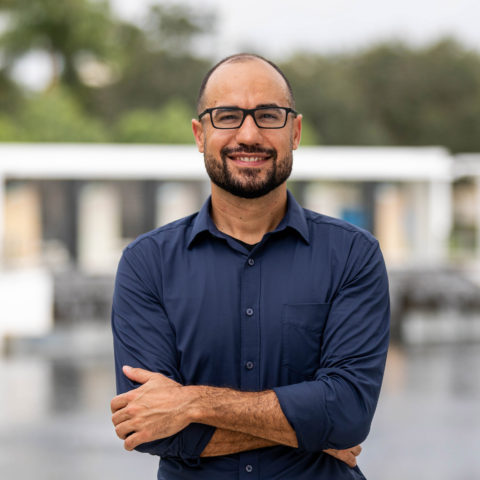Religious studies Professor Mark Luttio began a five-month journey to the world’s religious epicenters with nothing more than a single change of clothes and his laptop tucked into an ordinary backpack.
When his odyssey came to an end, his burden had become even lighter.
“I had learned one of the pathways to peace is to live with less,” he said. “It’s a challenge, but eventually you have a sense of relief without so much stuff.”
Metaphorically lighter, Luttio was also literally lighter.
“I lost about 20 pounds,” he said.
It was partly the physical demands of a journey that averaged 10 miles a day, on foot, by plane, boat, camel, rickshaw and elephant. But it was partly his deep immersion into local religious traditions.
“In India, I started to live like a Sikh,” he said. “I woke up one day and realized I was starting to look like a Sikh and feel like a Sikh. I stopped cutting my hair and shaving. And they don’t eat meat. I suddenly knew I had become a vegetarian. I was very surprised by my personal transformation.”
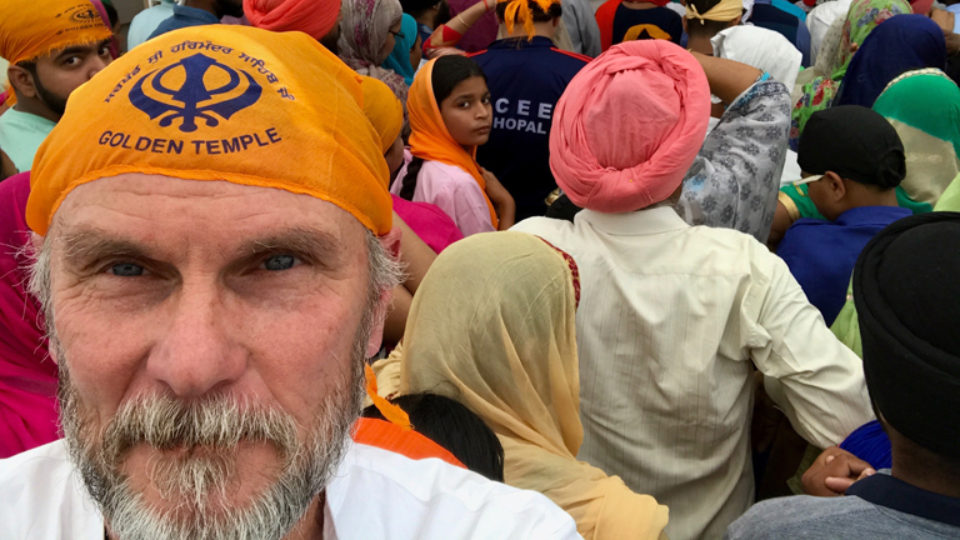
Luttio traveled 100,000 miles, visiting 55 cities in 17 countries. He spent a month in Asia, two months in the Middle East, a month in Europe and a month in India. Made possible by the Kathleen Cheek Milby Endowed Faculty Fellowship, his journey focused on promoting global understanding. Such a broad, encompassing topic becomes manageable the moment it becomes personal, he said.
For instance, to understand the heart of Taoism, he hiked mountains sacred to the religion and prayed in trailside temples. But he also pushed himself beyond the typical “religious tourist” routes. In China, that meant a 15-hour train trip with locals.
“I had to lay aside my fears. I had to risk rubbing elbows with them, risk praying with them. But when you see the sacred in each other, no matter the color or the religion, we see the divine in each other’s faces,” he said. “We see them not as other, but as brother. And we’re able to see the unique differences between us as something to be celebrated. One of the pathways to peace is to preserve and honor what is sacred in each of us.”
Luttio began his journey in Japan last December with J-Term students. In Kyoto, they were served by a 16th generation tea master. The tea ceremony is a Zen ritual focused on being present in the moment.
“Every religion,” Luttio said, “has its jewel to offer us.”
Japanese rituals are a sort of homecoming for Luttio. He was born in Japan to missionary parents. Japanese was his first language. He was six years old before he realized he was a blue-eyed blond American kid and not Japanese. He considers himself bicultural, but has always felt more Asian than Western.
“That’s one of the reasons I like to take Lynn students to Japan,” he said. “It’s home to me.”
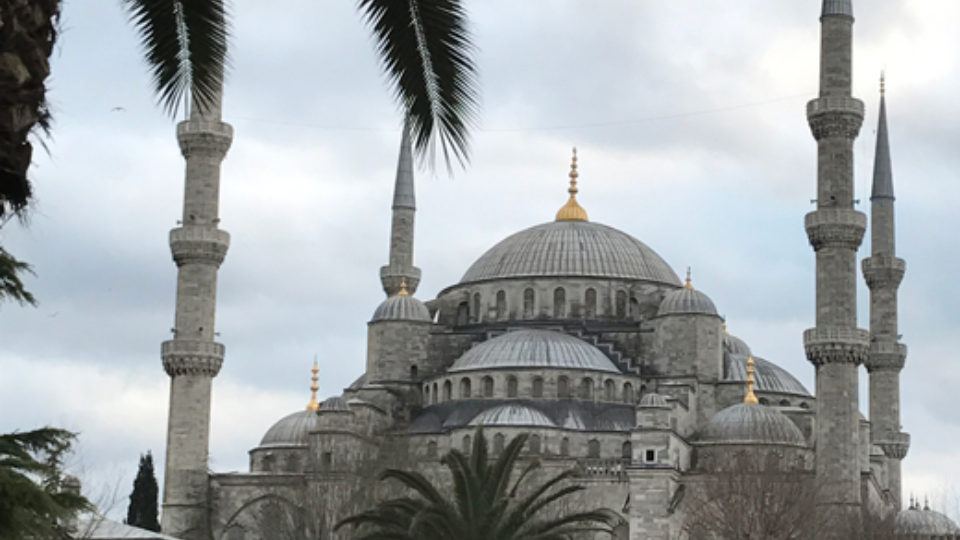
Idyllic as it seems, Luttio’s journey had its share of unsettling episodes, too. In the textbook he wrote on his return, called Pathways to Peace: A Spiritual Journey Beyond Religious Conflict, Luttio related the joy of joining the faithful in prayer at the Blue Mosque in Istanbul, only to be met with the darker side of a religious pilgrimage.
“I heard the call for prayer,” he wrote. “I had to go. I quickly took off my shoes. I put my shoes in the plastic bag, stuffed it into the shoe box. The mosque was overwhelmingly beautiful. A sign read, ‘Visitors stay behind this line.’ But when a guard beckoned me and urged me to join them in prostration and submission to the God of Abraham, Mohammed and Jesus, I was struck beyond words how all three of these religions worship the same God. One God. Those around me were my brothers. They weren’t ‘others’ to be feared. I left on a spiritual high. Then—reality.”
Moments after rising from prayer, Luttio was robbed outside of the mosque.
“It was tense. Being escorted in the Sinai by armed guards was tense,” he said. “Being on the border of Syria was tense. But I did not find the world to be a big, bad scary place. In this moment in time, intolerance is creating a situation of danger and ugliness. But I found, for the most part, people everywhere desire the same thing we do, to live in peace and harmony.”
Luttio will use his Pathways to Peace text, published by Lynn University Digital Press, in his World Religions courses. But he will also encourage his students to embark on a journey similar to his, only closer to campus. His assignment: Visit a house of worship that they’re slightly afraid of, to experience its core rituals.
“So a Muslim student will go to a synagogue, or a Christian will go to a Hindu temple,” Luttio said. “This is another pathway to peace, understanding that religions can be noncompeting.”
Luttio believes making a personal connection can teach us as much as any sacred text.
“Even though I am a scholar, I remain far more interested in the bended knee and the breaking of bread than in dogma,” he said. “I want that to be true for Lynn students as well.”
